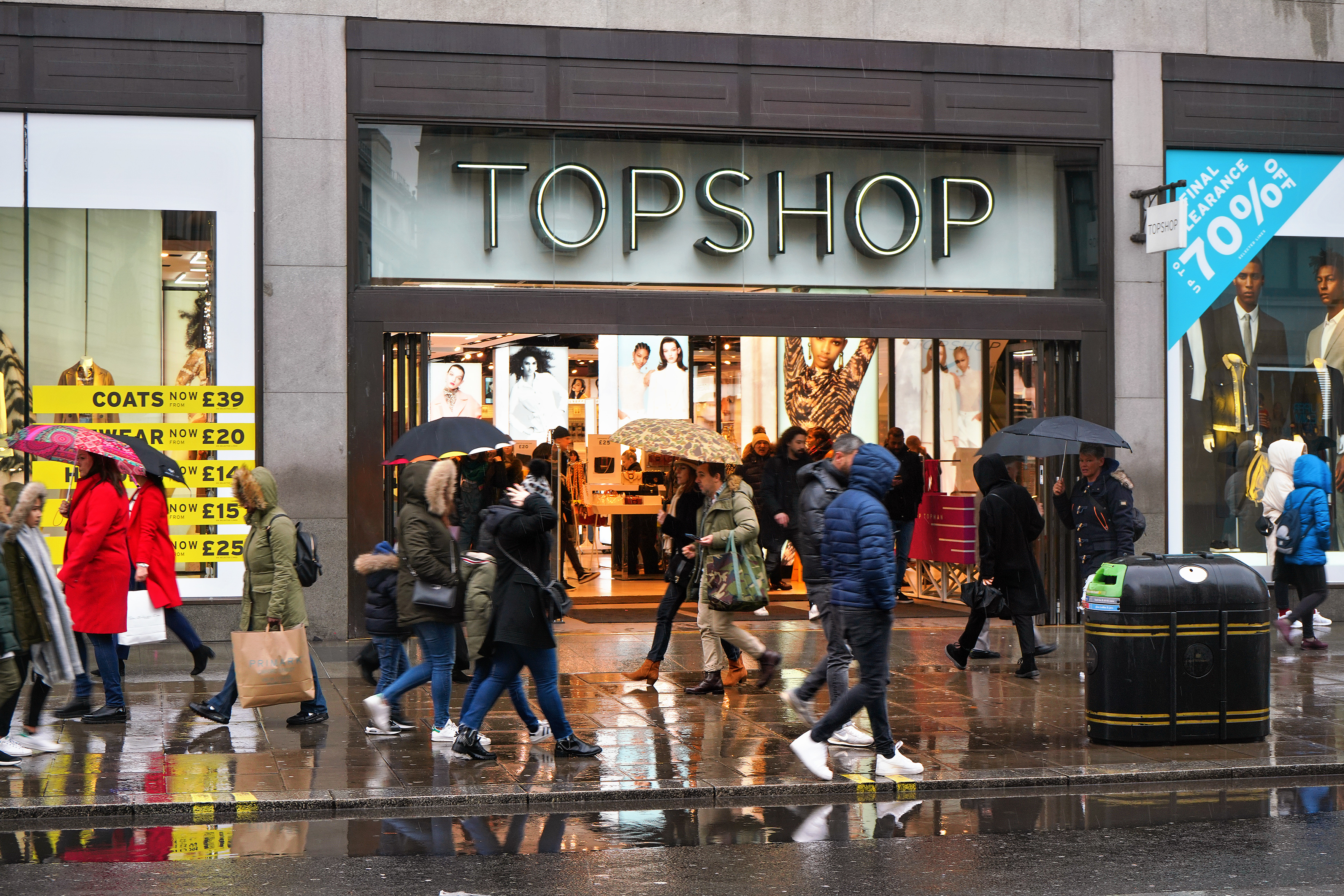Will Topshop return to the UK high street?
Despite Asos selling a £135 million stake in Topshop, is there a chance for the retailer to make a comeback on the high street?


For most of the 1990s, Topshop ruled the high street. Under the management of the combative Philip Green, or at least of his senior staff, it pioneered cheap, fast fashion, bringing style and panache to clothes that everyone could afford. It formed partnerships with the likes of Kate Moss and Beyoncé, and its flagship store on Oxford Street covered five floors. At its peak, it was inescapable. After Green’s Arcadia Group went into administration, however, it was sold to its online rival Asos, and the stores were closed down.
It might be about to make a return. Last week, Asos sold a £135 million stake in the business to Heartland, controlled by the Danish retailer Anders Povlsen, who also owns brands such as Jack & Jones and Vero Moda. There are plans to reboot the website and the company says it will explore opening physical stores again. If all goes to plan, there could be a Topshop on every high street once again, bringing a much-needed dash of colour to the increasingly drab parade of charity and betting shops that dominate many town centres.
Will Topshop be resuscitated?
It is a lovely idea, and it would be great if it happened. In its heyday, Topshop was a great British success story, even if its achievements were often overshadowed by Green’s larger-than-life persona. But, sadly, it is very hard to see it making a comeback. The reality is that it is impossible to revive even the greatest retail brands once they have disappeared from the retail centres.
MoneyWeek
Subscribe to MoneyWeek today and get your first six magazine issues absolutely FREE

Sign up to Money Morning
Don't miss the latest investment and personal finances news, market analysis, plus money-saving tips with our free twice-daily newsletter
Don't miss the latest investment and personal finances news, market analysis, plus money-saving tips with our free twice-daily newsletter
Over the last couple of decades, plenty of people have tried and failed to bring retail brands back from the dead. Woolworths was one of the best-loved chains on the high street, and after it went out of business in the wake of the financial crisis of 2008 and 2009, there have been various attempts to bring it back to life. The most recent is by the German owner of the name, where the brand is still trading.
But none of them have managed to get the brand anywhere close to its former glories. Likewise, the owners of the electrical chain Comet tried a comeback in 2020, but it got nowhere. Laura Ashley has never managed to return to anything like its peak, even under its current owner, Next. We have not seen the return of C&A, or British Home Stores, or Rumbelows, even though they were all huge chains back in the day. The list goes on and on. There are hardly any retail chains that have managed to make a significant revival once they have gone under.
Why do retail chains fail to make a comeback?
There are two reasons for that. First, the high street moves on, especially in fashion. The teenage girls who made up the core market for Topshop have found other places to shop, buying their fast fashion from Boohoo or Shein, or shopping for vintage clothes on the increasingly popular second-hand websites. To a 16-year-old, a brand that closed down five years ago means nothing, and one that was big in the 1990s might as well come from the Roman Empire for all it means today. Once a chain closes down, rivals move in and offer the same products in a different format. Indeed, the reason the chain closed was probably because its customers already found it tired and irrelevant, and disappearing for five or 10 years is not likely to have fixed that. If anything it will have made it worse.
Next, brand loyalty in retailing is far weaker than executives and investors think it is. Most shops are successful because they are in the right place, they manage to embody a certain look or lifestyle and they find a way to sell at competitive prices and still make a profit. It is a difficult combination to get right. It is the product that customers are mainly interested in, not the place where they happen to be buying it, whether it is a new pair of jeans or a TV. Once they get used to buying somewhere else, it is hard to persuade them to go back.
The blunt reality is that reviving a dead brand is not a sustainable business model. The chains that once dominated the high street went under for a reason. Once a chain closes, the game is up. There is no way back, and there is no point in investors wasting a lot of money trying to prove that there is.
This article was first published in MoneyWeek's magazine. Enjoy exclusive early access to news, opinion and analysis from our team of financial experts with a MoneyWeek subscription.
Get the latest financial news, insights and expert analysis from our award-winning MoneyWeek team, to help you understand what really matters when it comes to your finances.
Matthew Lynn is a columnist for Bloomberg, and writes weekly commentary syndicated in papers such as the Daily Telegraph, Die Welt, the Sydney Morning Herald, the South China Morning Post and the Miami Herald. He is also an associate editor of Spectator Business, and a regular contributor to The Spectator. Before that, he worked for the business section of the Sunday Times for ten years.
He has written books on finance and financial topics, including Bust: Greece, The Euro and The Sovereign Debt Crisis and The Long Depression: The Slump of 2008 to 2031. Matthew is also the author of the Death Force series of military thrillers and the founder of Lume Books, an independent publisher.
-
 ‘Why I have ditched my Help to Buy ISA for cash savings and the stock market’
‘Why I have ditched my Help to Buy ISA for cash savings and the stock market’Without the 25% bonus, my Help to Buy ISA is effectively redundant, says MoneyWeek writer Sam Walker.
-
 Is your inheritance tax allowance cut if you sell to downsize or sell your home to pay for care?
Is your inheritance tax allowance cut if you sell to downsize or sell your home to pay for care?Downsizing relief is a little-known benefit that could save your loved ones tens of thousands of pounds in inheritance tax after you’ve died.
-
 Stock markets have a mountain to climb: opt for resilience, growth and value
Stock markets have a mountain to climb: opt for resilience, growth and valueOpinion Julian Wheeler, partner and US equity specialist, Shard Capital, highlights three US stocks where he would put his money
-
 The steady rise of stablecoins
The steady rise of stablecoinsInnovations in cryptocurrency have created stablecoins, a new form of money. Trump is an enthusiastic supporter, but its benefits are not yet clear
-
 SRT Marine Systems: A leader in marine technology
SRT Marine Systems: A leader in marine technologySRT Marine Systems is thriving and has a bulging order book, says Dr Michael Tubbs
-
 Goodwin: A superlative British manufacturer to buy now
Goodwin: A superlative British manufacturer to buy nowVeteran engineering group Goodwin has created a new profit engine. But following its tremendous run, can investors still afford the shares?
-
 A change in leadership: Is US stock market exceptionalism over?
A change in leadership: Is US stock market exceptionalism over?US stocks trailed the rest of the world in 2025. Is this a sign that a long-overdue shift is underway?
-
 A reckoning is coming for unnecessary investment trusts
A reckoning is coming for unnecessary investment trustsInvestment trusts that don’t use their structural advantages will find it increasingly hard to survive, says Rupert Hargreaves
-
 Modern Monetary Theory and the return of magical thinking
Modern Monetary Theory and the return of magical thinkingThe Modern Monetary Theory is back in fashion again. How worried should we be?
-
 Metals and AI power emerging markets
Metals and AI power emerging marketsThis year’s big emerging market winners have tended to offer exposure to one of 2025’s two winning trends – AI-focused tech and the global metals rally
